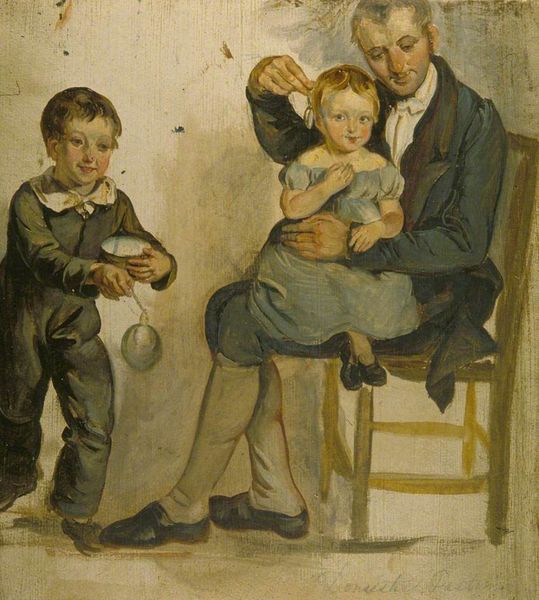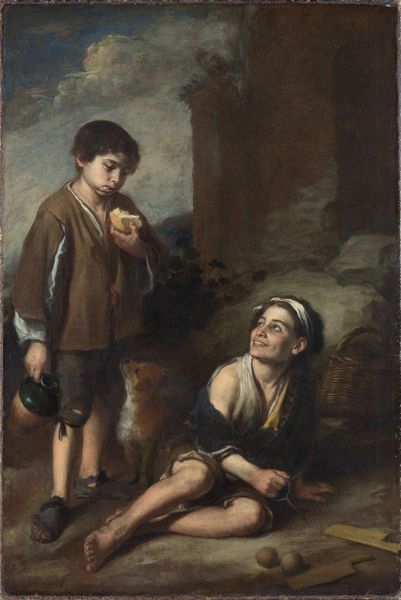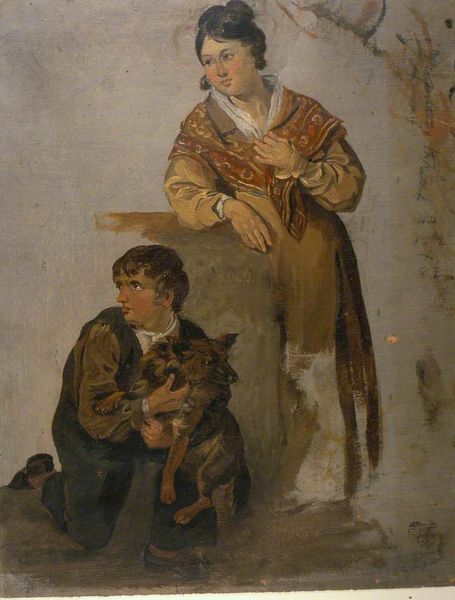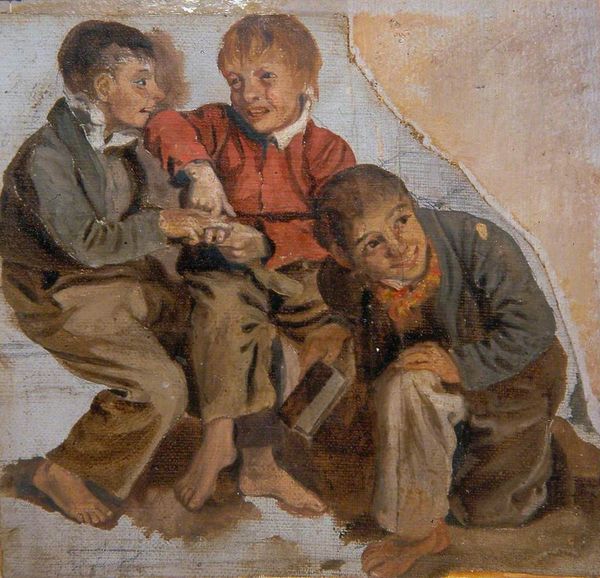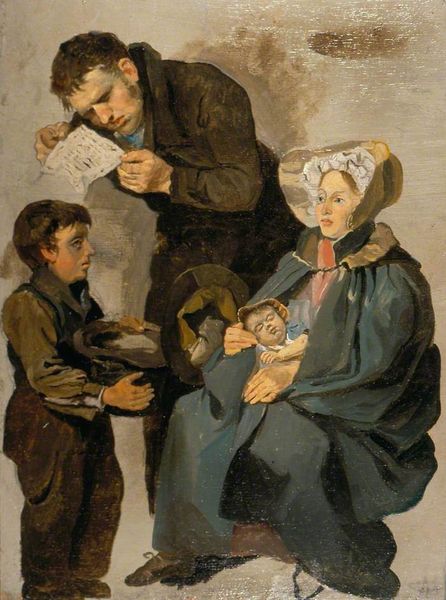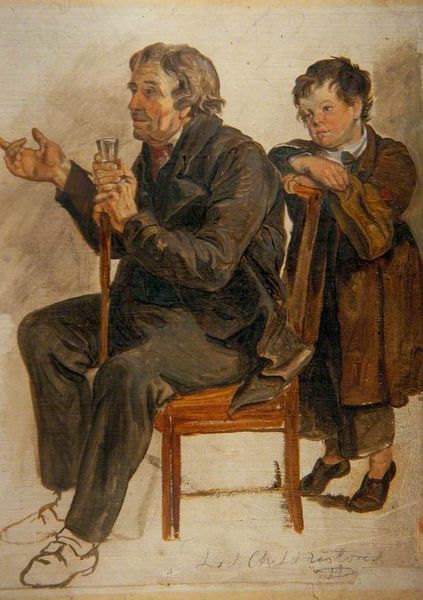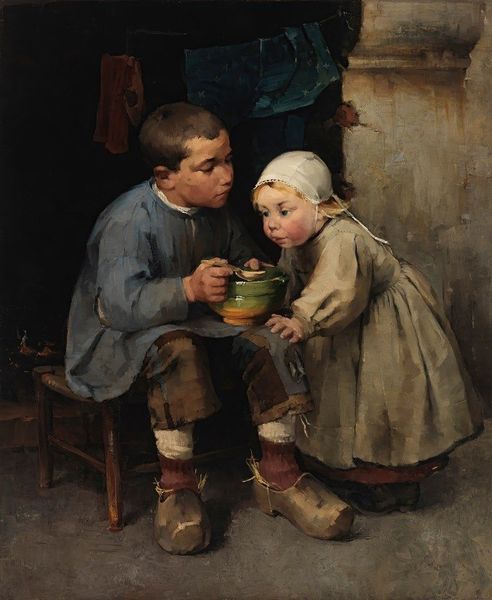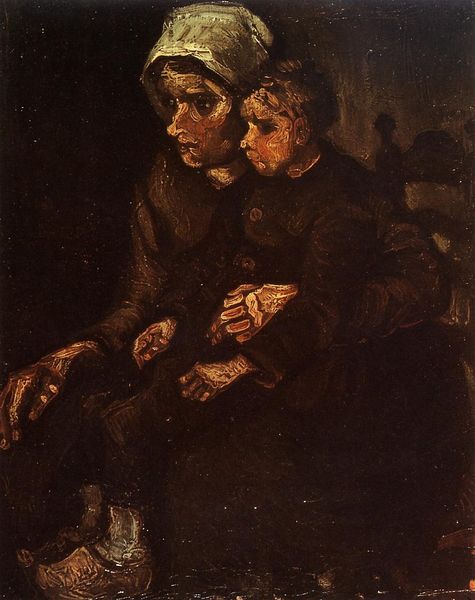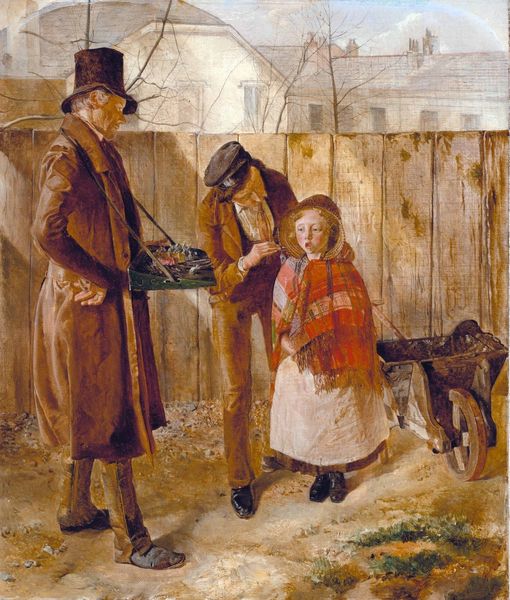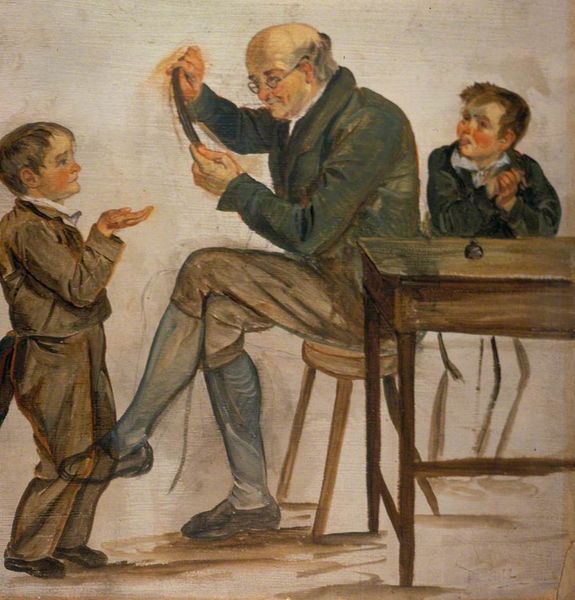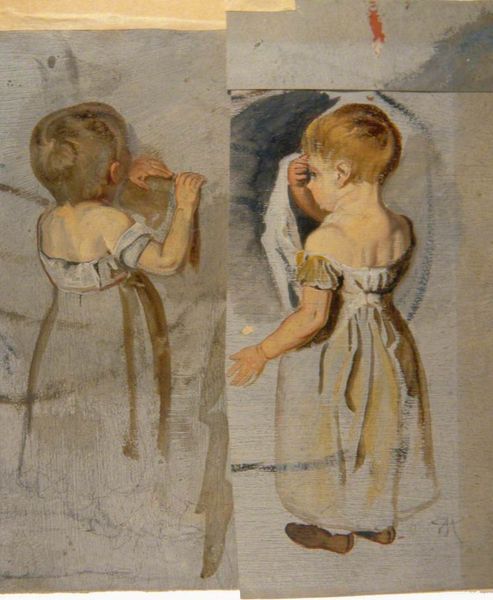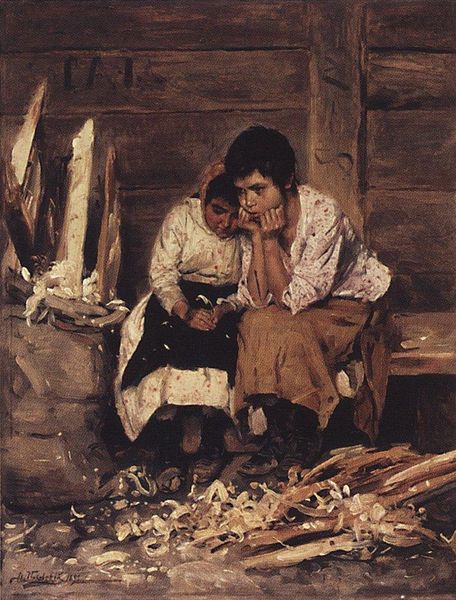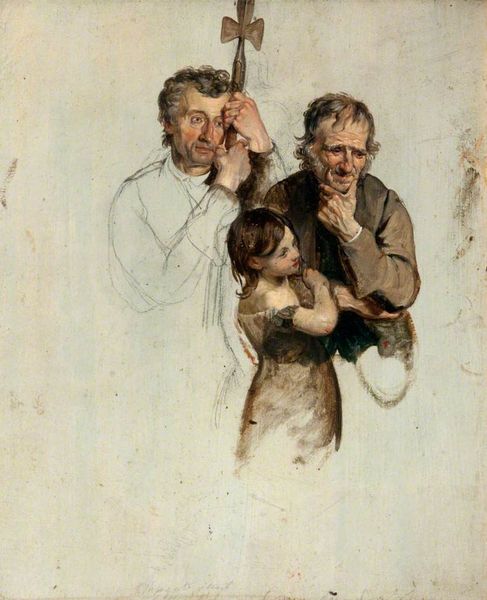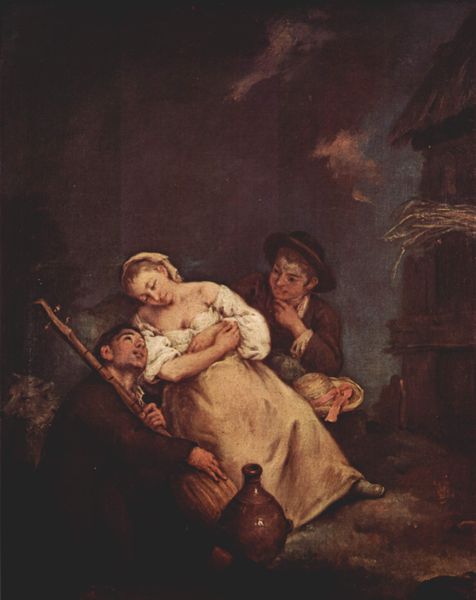
painting, oil-paint
#
portrait
#
painting
#
oil-paint
#
figuration
#
oil painting
#
portrait reference
#
romanticism
#
genre-painting
#
portrait art
#
fine art portrait
Copyright: Public domain
Curator: Extracting Stings, painted around 1827 by George Harvey, presents a curious scene. My first impression is one of discomfort; the colour palette and the positioning of the boys is immediately off putting. Editor: Off-putting perhaps, but consider the labor represented, quite literally, in extracting a sting. Think of the material processes informing the canvas itself, the sourcing and grinding of pigments. It speaks to a larger narrative of art as work. Curator: That's a solid point, Editor. I'm drawn to the class dynamics that seem to permeate this image. One boy seems to hold a musical instrument – a sign of leisure perhaps – while the other tends to his exposed leg, suggesting physical labour or hardship. How do these contrasting figures play into broader narratives of the period? Editor: It pushes us to consider how social roles are materialized. What are the tools available? Are they of leisure, or like the splinter and pin, used as a way of dealing with the world's harms and the ever-present economic disparities of 19th century life. Curator: And how fascinating to read this work through the lens of Romanticism. Harvey seems to both idealize and reveal the grittiness of everyday life. It is both a celebration and a critique. Editor: Precisely. The oil paint becomes more than a medium, it’s a document, recording the tension between social strata and the hidden costs embedded within everyday existence. This tension makes the piece particularly captivating. Curator: Absolutely. Extracting Stings reminds us of art's potential to expose disparities of class and the labour, and what at first feels unpleasant can reveal unexpected depths of meaning. Editor: Indeed. Paying close attention to materiality can teach us an incredible amount about ourselves. It also leaves a lasting, poignant reflection on social experiences in past times.
Comments
No comments
Be the first to comment and join the conversation on the ultimate creative platform.
